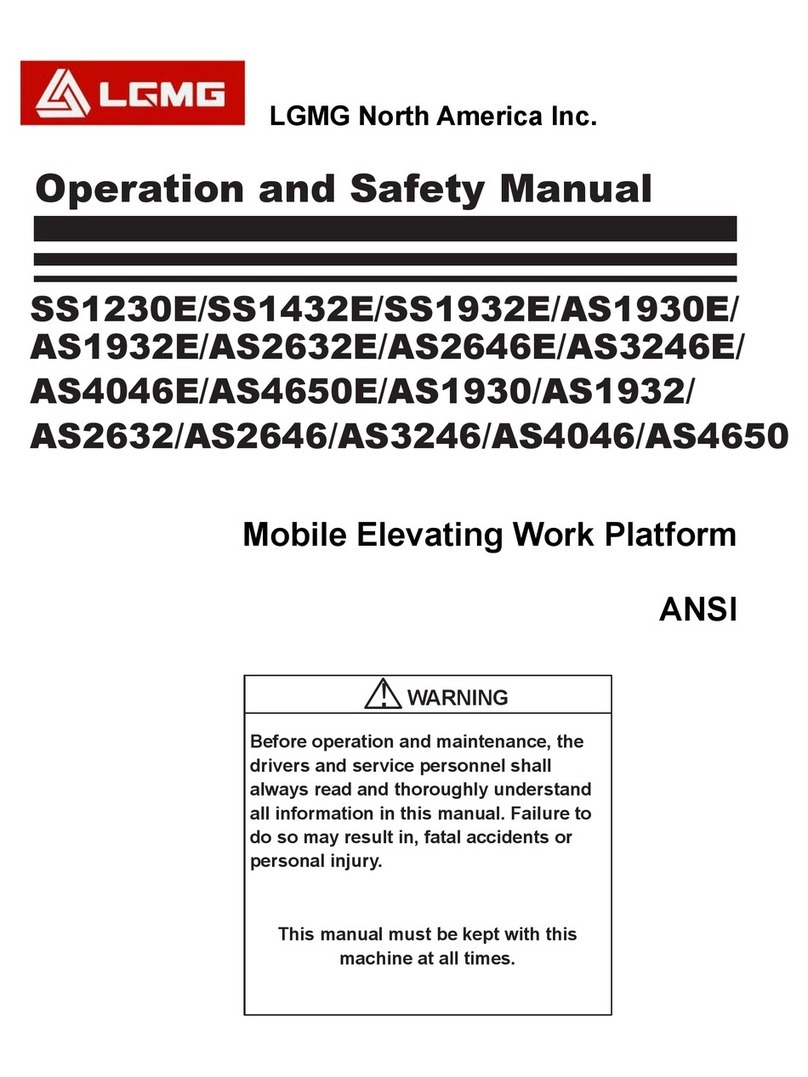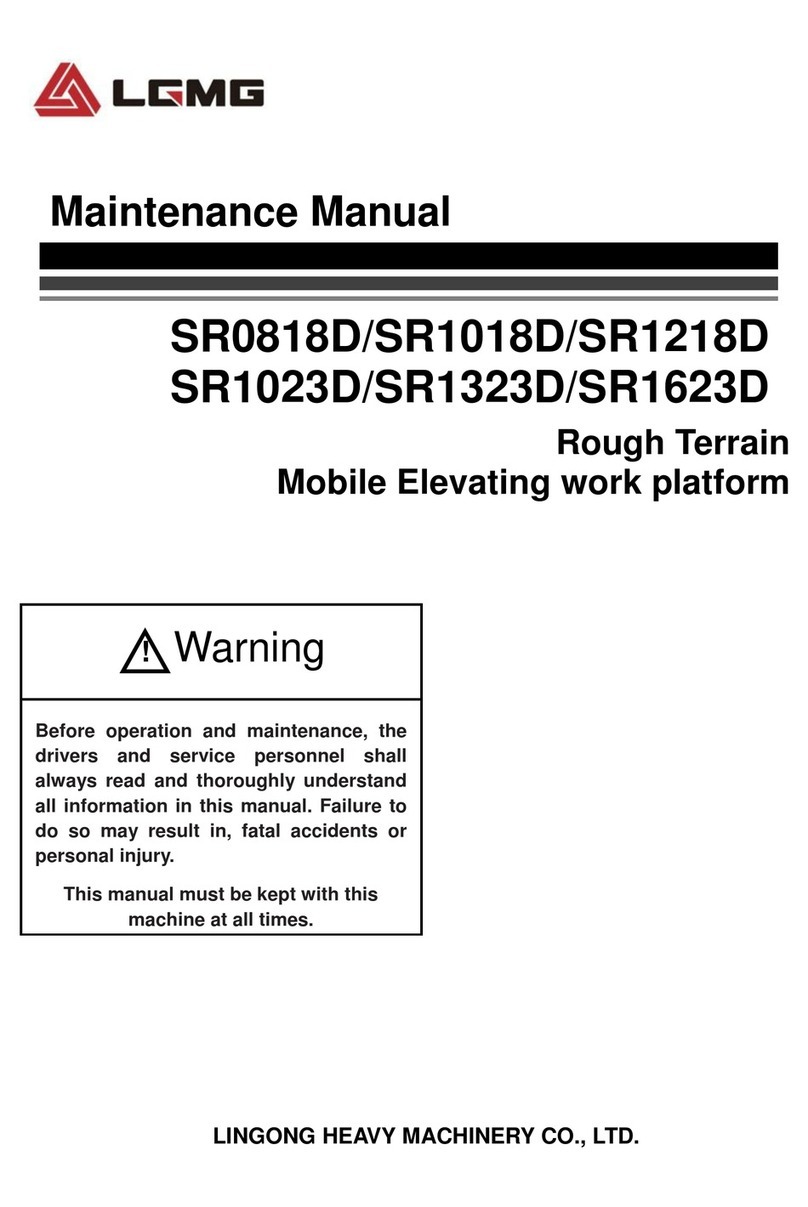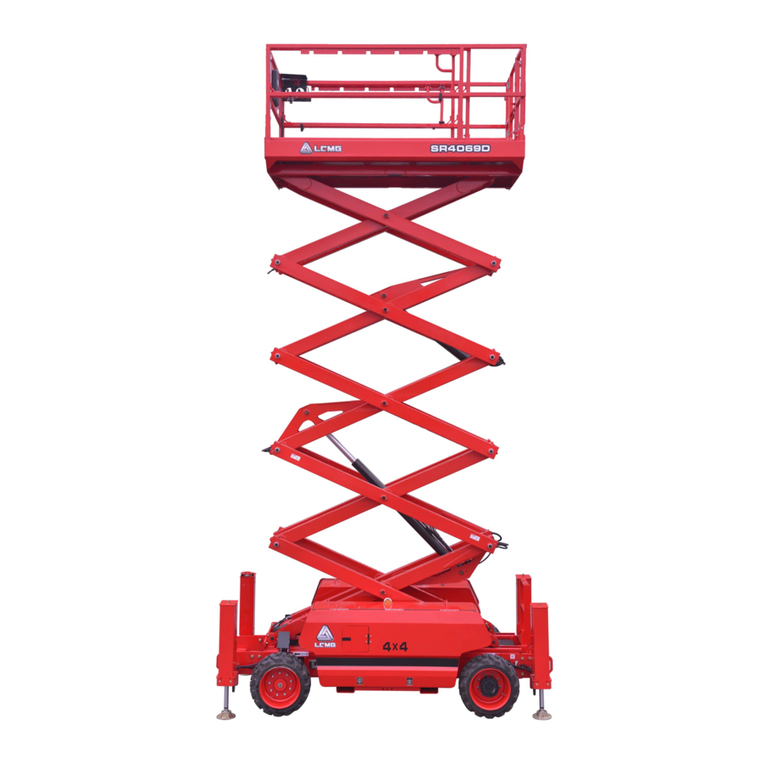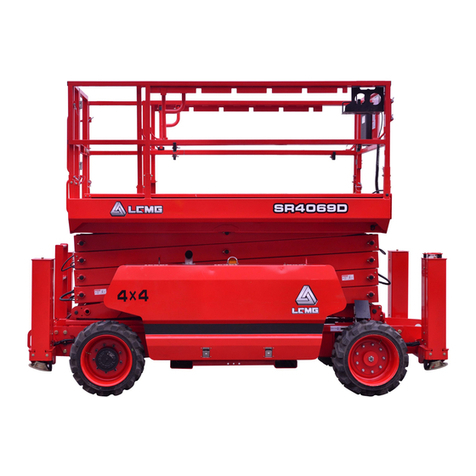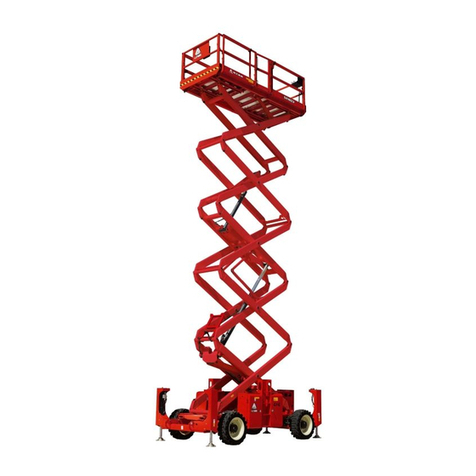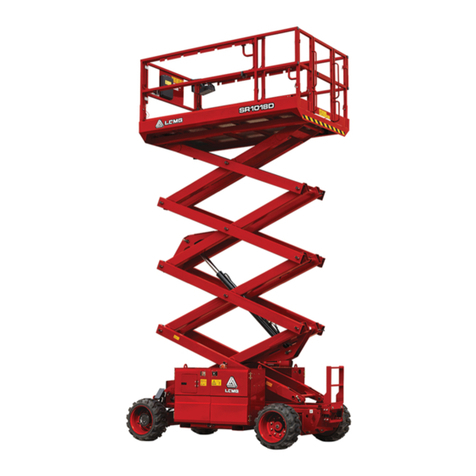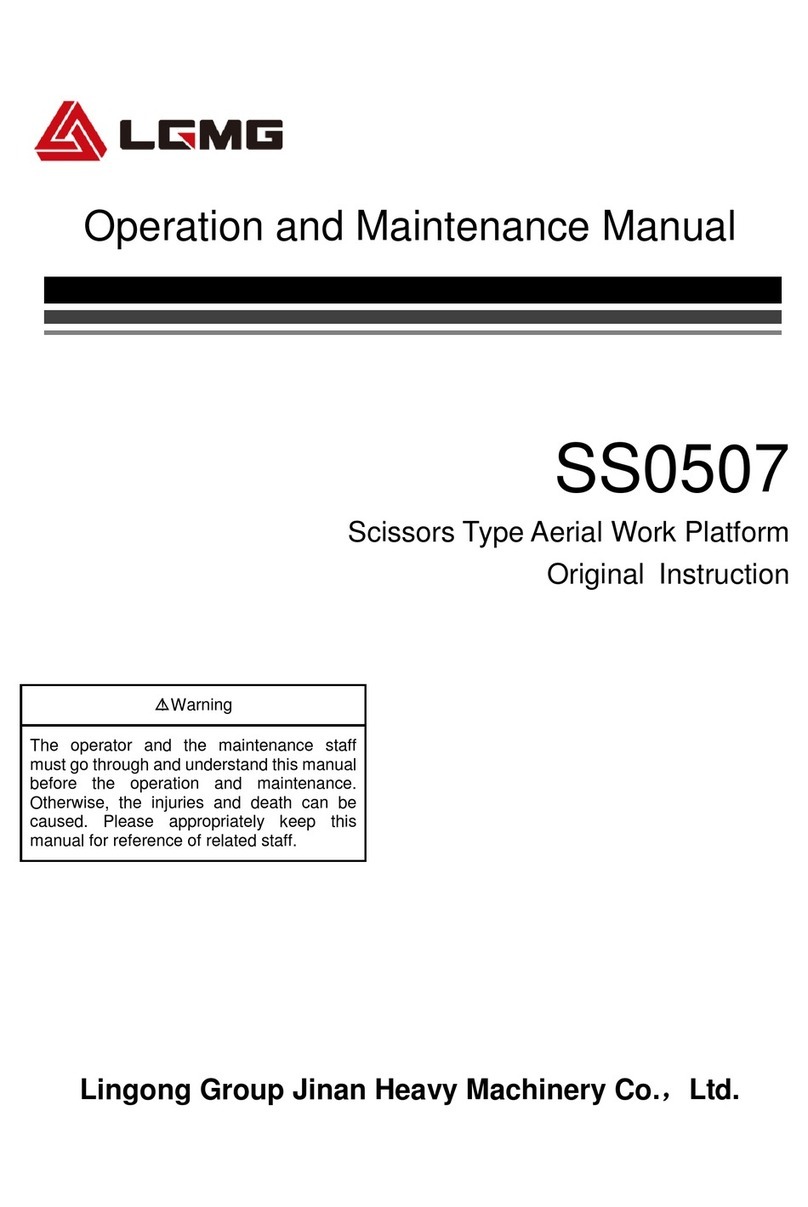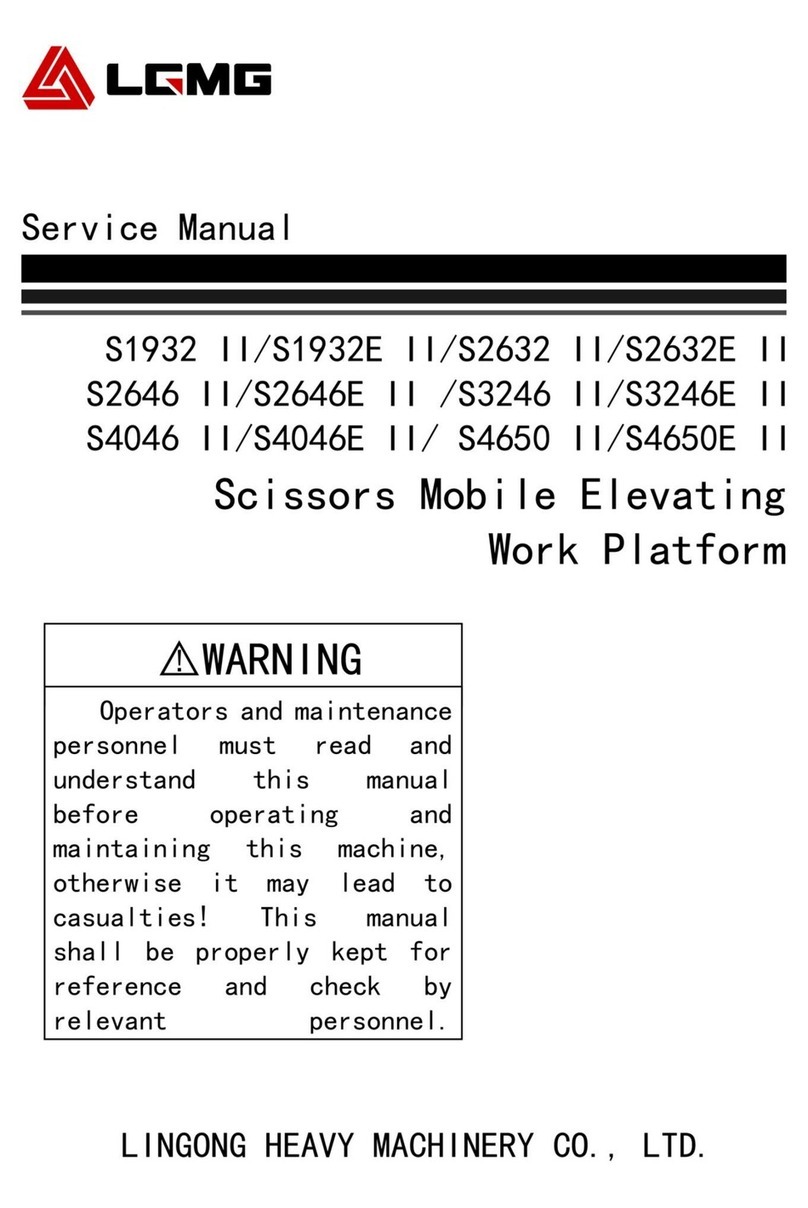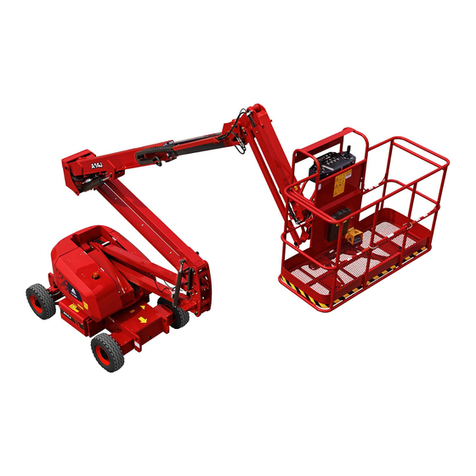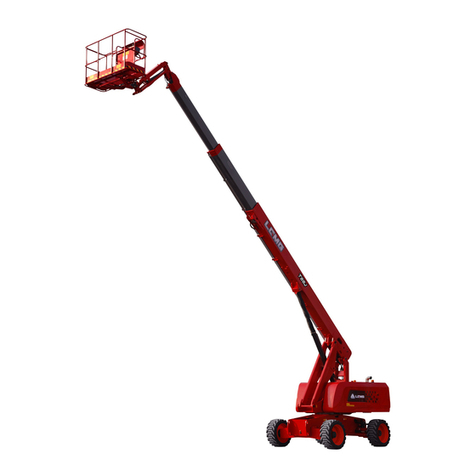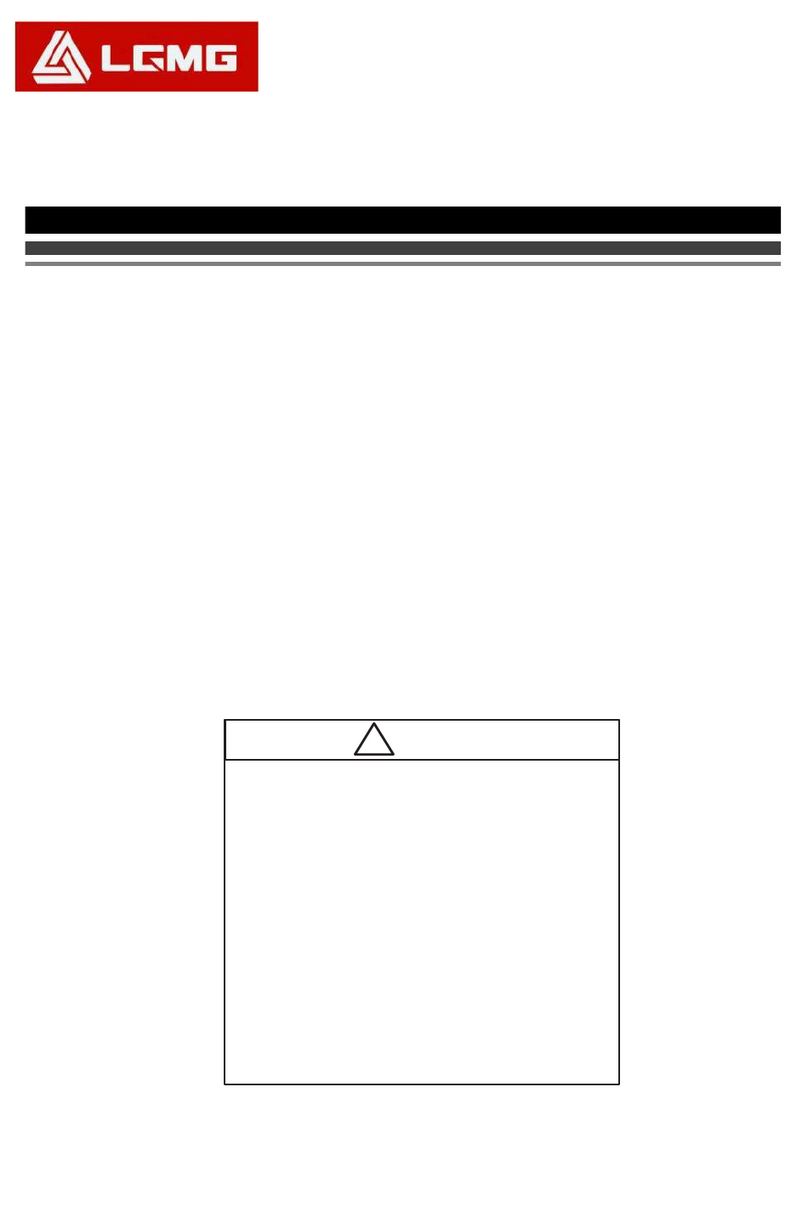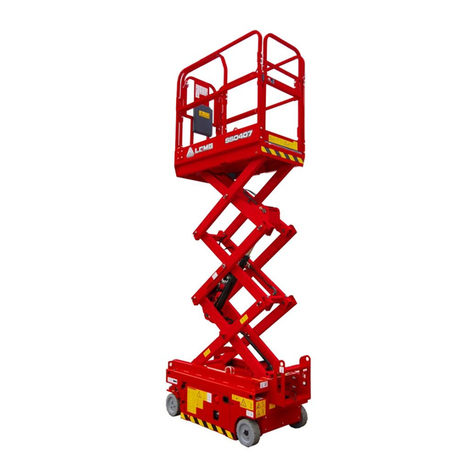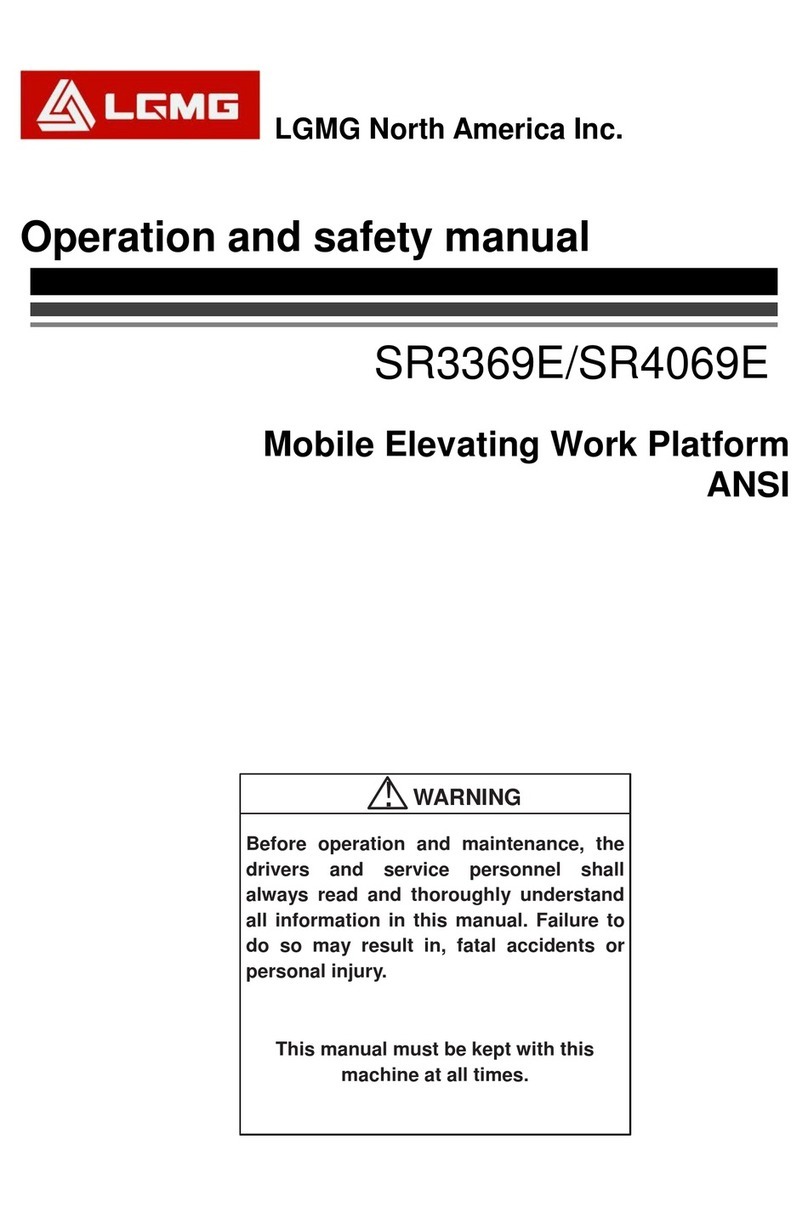
LGMG North America Inc. Operation and Safety Manual
3
1.1 Hazards
△
! WARNING: Failure to follow the
instructions and safety rules in this
manual may result in serious injury or
death. Alcoholics, drug addicts, and
those taking reaction inhibiting drugs
are strictly prohibited from
approaching and operating the
machine.
1.2 Before Operation, Please
Ensure that:
1) Equipped with PFPE, such as helmet, seat
belt, safety shoes, goggles, protective
gloves, etc., and in good physical condition.
2) You have understood and implemented the
safety rules for machine operations in this
Operation Manual.
3) Know and understand the rules for safe
operation of the machine before proceeding
to the next step.
4) Always perform the check before the
operation.
5) Always perform a functional test before
use.
6) Check the workplace.
7) Use the machine only for specified
purposes.
8) All applicable laws and regulations shall be
read, understood and complied with.
9) Been trained to operate the machine safely.
1.3 Classification of Hazards
Symbols, color codes and symbolic words used
in LGMG products have the following meanings:
1) Safety warning sign - used to warn of
potential personal injuries. Observe all
safety tips at the back of the sign to avoid
possible personal injury or death.
2) Red indicates a dangerous situation. If it is
not avoided, it will lead to death or serious
injury.
3) Orange indicates a dangerous situation. If
not avoided, it may cause death or serious
injury.
4) Yellow indicates a dangerous situation. If
not avoided, it may cause minor or
moderate personal injury.
5) Blue indicates a dangerous situation. If not
avoided, it may result in property loss.
1.4 Intended Use
The use of this machine is limited to lifting
personnel and their tools and materials to
workplaces at heights and it can be used
indoors and outdoors.
△
! WARNING: It is strictly forbidden
to modify the machine without
permission, carry goods, and hang or
lift articles.
1.5 Safety Sign Maintenance
1) Replenish missing and replace damaged
safety sign.
2) Clean the safety sign with neutral cleaning
agent or clean water.
3) Solvent-based cleaners may damage the












